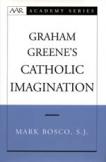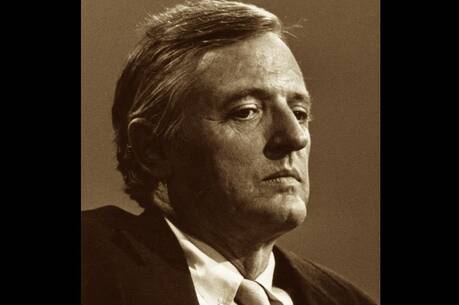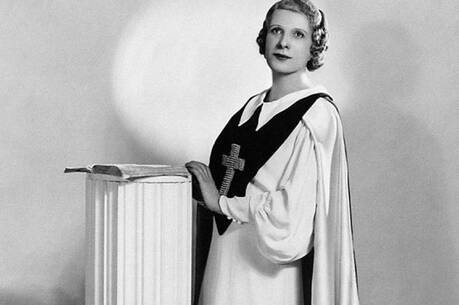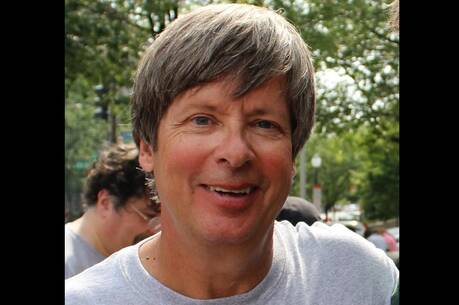The Dream of Religious Creativity
Graham Greene has had a difficult time winning the title of “Catholic Novelist”—one that he never wanted anyway. At the beginning of his career he was dismissed as a man who wrote about bad Catholics—the whiskey priest (The Power and the Glory), Sarah (The End of the Affair), Scoby (The Heart of the Matter). In fact, the Vatican ordered the Archbishop of Westminster to deliver a condemnation of The Power and the Glory to Greene privately. But many of us thought it was the best book we ever read about the priesthood. In the next phase, when Greene drifted from regular Catholic practice and critics discovered his disorderly (to put it mildly) personal life, he was dismissed as a fallen-away Catholic novelist.
Finally, secular critics decided that while his early novels (such as the three mentioned above) were certainly Catholic, his later ones (Our Man in Havana, The Honorary Consul, Monsignor Quixote) are “post-Catholic.” (In these days a paradigm doesn’t really measure up unless it has “post” before it.) I would wager that insofar as Greene appears in courses at Catholic colleges, the treatment consists of the last two paradigms. Greene was a fallen-away Catholic with sexual hang-ups who wrote post-Catholic novels—and a Marxist besides.
Now comes Mark Bosco, S.J., assistant professor of English and theology at Loyola Chicago, who smashes all these models. Greene (who died in union with the church), he has found, was deeply interested in the Second Vatican Council and read books about the council which he annotated, and these annotations seem to foreshadow his later books. The later books, Father Bosco argues, are not post-Catholic but post-conciliar. His careful analysis of Monsignor Quixote persuades me that he is right, and that Greene’s work must be taken into account by any one who reads him seriously—and by any student of the Second Vatican Council. Graham Greene’s Catholic Imagination establishes new paradigms of considerable importance.
“The leap of faith that Greene’s texts embody is...not so much from the natural to the supernatural, the real to the imaginary; rather, the leap of faith is more a negotiated trust in a story, a trust that such a story takes the individual somewhere adequate to the full range of his human experience.... In Greene’s last great work [The Honorary Consul, Doctor Fischer and Monsignor Quixote], his Catholic imagination is fully engaged, making a case for faith over belief, hope over despair, love over hatred, and mystery over doubt.”
“His late novels offer a fresh perspective in which to chart how the discourse of Catholicism adds a surplus of meaning beyond the merely political, economic and cultural ideologies that pervade much of literary criticism. Likewise, these novels offer Catholic discourse a surplus of meaning beyond the emphasis of orthodoxy and authority that is so much part of the pre-Vatican II Church and, perhaps, beyond today’s Vatican Curia.”
If this be true, then the transformation in the work of Graham Greene might be a sign of hope no bigger than a man’s hand in the bleak sky of current Catholicism.
John R. Allen Jr. has recently reported in his column in The National Catholic Reporter on a meeting in Rome of curialists and house theologians to discuss the question of whether the council represented continuity or change in the course of the church. The tendency of the discussion, according to Allen, was to opt for a continuity model.
The mind of a sociologist (at least this sociologist) boggles at the blindness of such an interpretation. The council was a dramatic and traumatic event that destabilized the structures of the 19th- and early 20th-century church. It was a hurricane, an earthquake, an exploding volcano, a tidal wave, reform that the timid had postponed far too long. No amount of pretense can cover up that truth. The bureaucrats might think they have contained it, but they are fooling themselves. What happens now is the domain of the Catholic creators of culture and the faith of millions of Catholic laypeople.
Bosco is a student of culture, particularly the interaction of religion and culture. So the impact of the council on culture that he detects in Greene’s work is a datum that cannot be ignored. Greene’s characters, he says, “point to and express choices and insights based on reflective experiences of committed love. The mysteriousness of such encounters intimates a moment of insight, transformation or choice of action beyond the political and social reductionisms of ideology.... His writing echoes the hopes and dreams of a religious creativity imagined in the midst of the real horrors of the 20th Century.”
Time, I feel certain, will justify Father Bosco’s reading of the late work of Graham Greene. Whether it will also witness a change in non-ecclesiastical (though not anti-ecclesiastical) Catholic culture, like that which Bosco finds in Greene, remains to be seen. I sure hope so.
This article also appeared in print, under the headline “The Dream of Religious Creativity,” in the February 13, 2006, issue.








